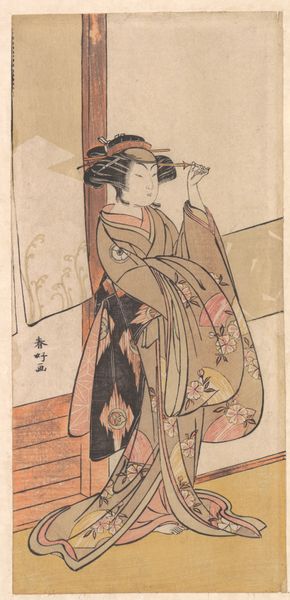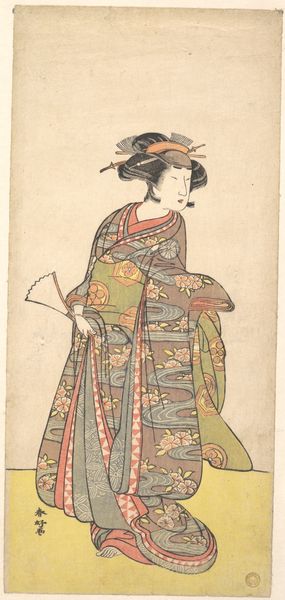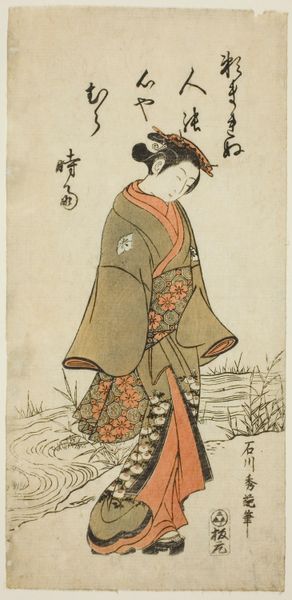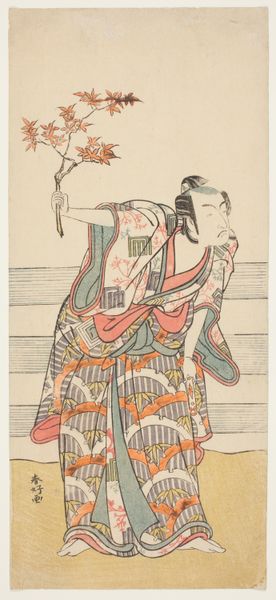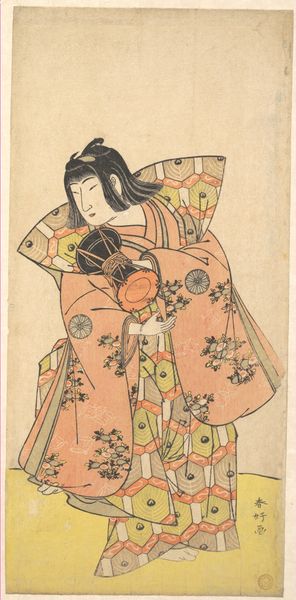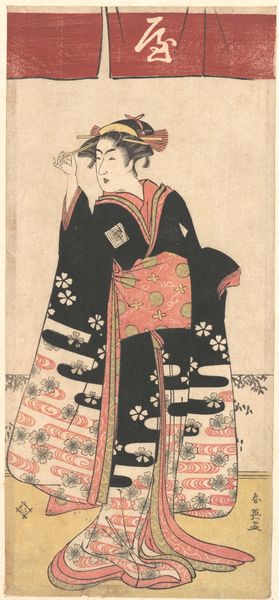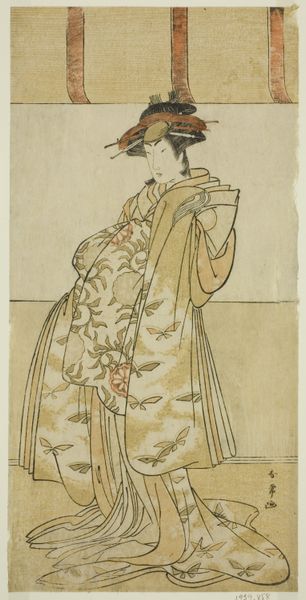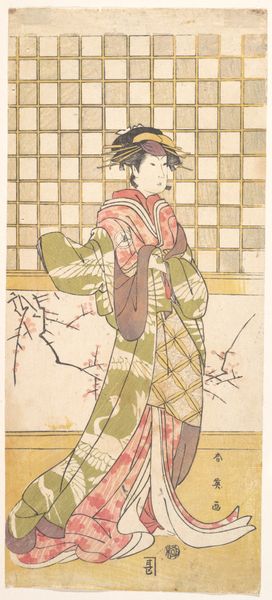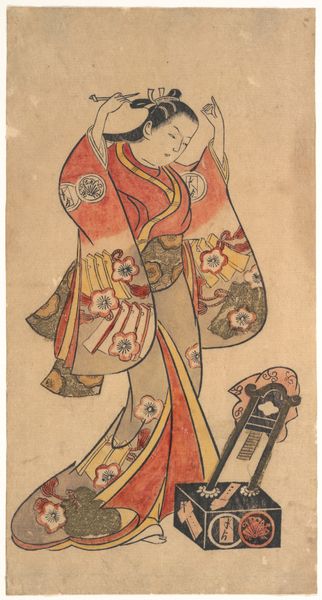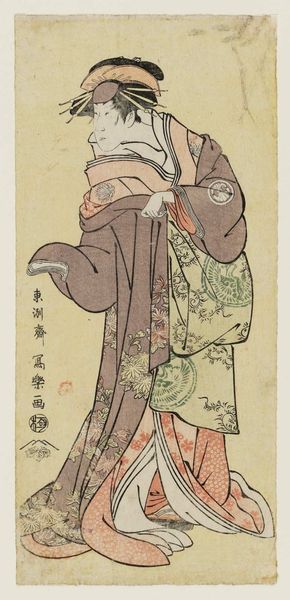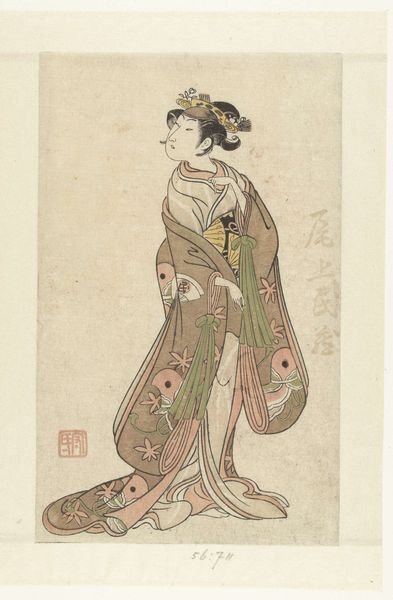
The Actor Iwai Hanshiro IV as Hitomaru Disguised as the Geisha Oshun in the Play Edo no Hana Mimasu Soga, Performed at the Nakamura Theater in the Third Month, 1783 c. 1783
0:00
0:00
print, woodblock-print
#
portrait
# print
#
asian-art
#
caricature
#
ukiyo-e
#
woodblock-print
Dimensions: 30.6 × 14.4 cm (12 1/16 × 5 11/16 in.)
Copyright: Public Domain
Curator: Looking at this print, made around 1783, we see Katsukawa Shunko’s “The Actor Iwai Hanshiro IV as Hitomaru Disguised as the Geisha Oshun in the Play Edo no Hana Mimasu Soga." It's part of the Ukiyo-e tradition and uses woodblock print techniques. Editor: There's a real presence about this figure. Even through the stylized approach, you feel this poised, watchful energy emanating from the actor. Curator: Absolutely. What strikes me is the social context in which these actor prints flourished. They functioned almost as celebrity endorsements, solidifying an actor's fame within the Edo period's theatrical scene. These images became tied to the actor’s identity and his stage presence, especially amongst theater patrons. Editor: I think what speaks to me the most here is how it reflects notions of identity play – particularly gender performativity. I'm interested in how the very artifice inherent in Kabuki theater intersects with the woodblock aesthetic. Look at the details – the careful application of color to delineate layers of kimono, and that almost cartoonish treatment of the face that, while likely a faithful representation, nonetheless speaks to caricature. Curator: That "cartoonish" quality aligns with the Ukiyo-e emphasis on capturing the essence of a fleeting moment—the actor's pose, a dramatic expression—rather than striving for realistic portraiture. The prints themselves were ephemeral, mass-produced objects designed for wide distribution. We often lose track of the relationship to the economy of printing, but it plays a big part of the style and dissemination. Editor: Thinking about celebrity, this is an interesting interplay between public and private personae that gets explored by these woodblock prints. Katsukawa's focus on Iwai Hanshiro IV reflects how the figure exists on stage, but even perhaps outside it too in the construction of identity and celebrity. Curator: The legacy of Kabuki theatre continues today as an important piece of Japanese culture and identity and this image really gives us a great insight into it. Editor: Absolutely. And on closer examination, there's so much for audiences to dissect and contemplate within it around identity, and that is incredibly compelling.
Comments
No comments
Be the first to comment and join the conversation on the ultimate creative platform.
